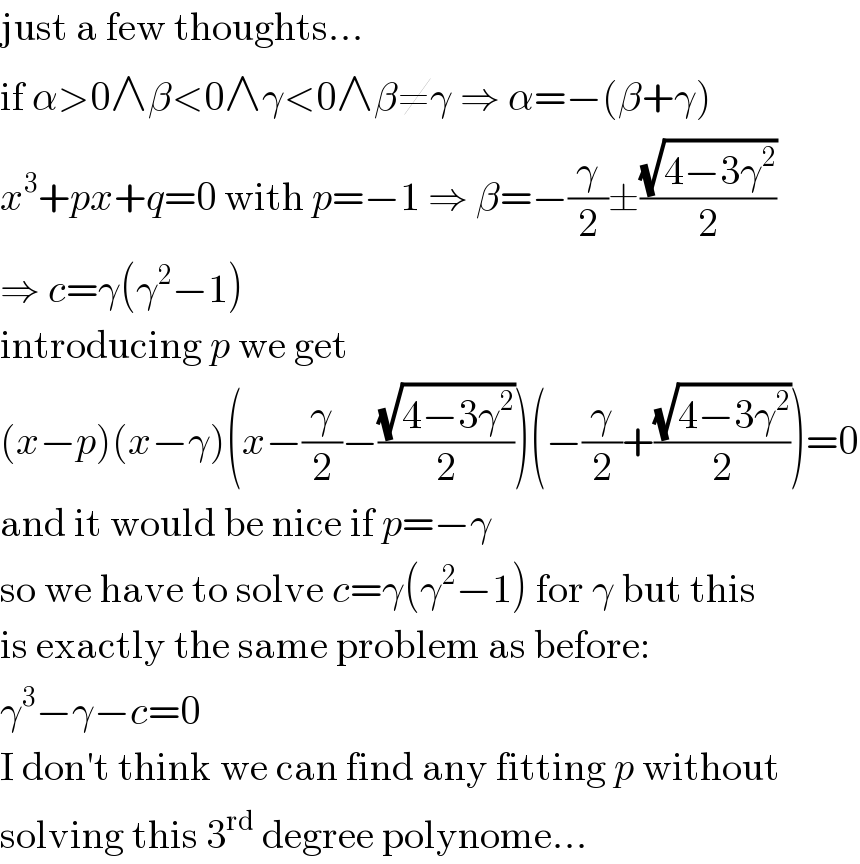
Question and Answers Forum
Question Number 123025 by ajfour last updated on 21/Nov/20

Commented by ajfour last updated on 22/Nov/20

Commented by ajfour last updated on 22/Nov/20

Commented by mr W last updated on 22/Nov/20

Commented by MJS_new last updated on 22/Nov/20

Answered by ajfour last updated on 26/Nov/20

